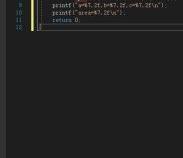Go语言中的常见设计模式及其实现方法
发布时间:2025-03-29 08:05:03 发布人:远客网络

Go语言(Golang)是一种静态类型、编译型、并发型,并且具有垃圾回收功能的编程语言。在Go语言中,设计模式是非常重要的,可以帮助开发者更好地组织代码、提高代码的可维护性和可扩展性。在Go语言中,有三种主要的设计模式:1、创建型模式;2、结构型模式;3、行为型模式。本文将详细介绍这三种设计模式,并以实例代码进行说明。
一、创建型模式
创建型模式主要关注对象的创建过程,它们使得一个系统独立于其对象的创建、组合和表示。创建型模式主要包括单例模式、工厂模式、抽象工厂模式、建造者模式和原型模式。
-
单例模式
- 定义:确保一个类只有一个实例,并提供一个全局访问点。
- 实现示例:
package mainimport (
"fmt"
"sync"
)
type Singleton struct{}
var instance *Singleton
var once sync.Once
func GetInstance() *Singleton {
once.Do(func() {
instance = &Singleton{}
})
return instance
}
func main() {
s1 := GetInstance()
s2 := GetInstance()
fmt.Println(s1 == s2) // true
}
- 解释:上述代码使用
sync.Once确保单例实例只被创建一次,这种实现方法是线程安全的。
-
工厂模式
- 定义:定义一个创建对象的接口,让子类决定实例化哪一个类。
- 实现示例:
package mainimport "fmt"
type Shape interface {
Draw()
}
type Circle struct{}
func (c *Circle) Draw() {
fmt.Println("Drawing Circle")
}
type Square struct{}
func (s *Square) Draw() {
fmt.Println("Drawing Square")
}
type ShapeFactory struct{}
func (sf *ShapeFactory) GetShape(shapeType string) Shape {
if shapeType == "circle" {
return &Circle{}
} else if shapeType == "square" {
return &Square{}
}
return nil
}
func main() {
factory := ShapeFactory{}
shape1 := factory.GetShape("circle")
shape1.Draw()
shape2 := factory.GetShape("square")
shape2.Draw()
}
- 解释:工厂模式通过一个工厂类根据传入的参数决定创建哪种具体的对象,这样可以避免直接在代码中使用具体类。
二、结构型模式
结构型模式主要关注类和对象的组合。它们通过继承和接口的方式来帮助开发者更好地组织代码。结构型模式主要包括适配器模式、桥接模式、组合模式、装饰模式、外观模式、享元模式和代理模式。
-
适配器模式
- 定义:将一个类的接口转换成客户希望的另一个接口,使得原本由于接口不兼容而无法一起工作的类可以一起工作。
- 实现示例:
package mainimport "fmt"
type Target interface {
Request()
}
type Adaptee struct{}
func (a *Adaptee) SpecificRequest() {
fmt.Println("Specific Request")
}
type Adapter struct {
adaptee *Adaptee
}
func (a *Adapter) Request() {
a.adaptee.SpecificRequest()
}
func main() {
adaptee := &Adaptee{}
adapter := &Adapter{adaptee: adaptee}
adapter.Request()
}
- 解释:适配器模式通过组合的方式将一个类的接口转换成另一个接口,使得原本不兼容的类可以一起工作。
-
装饰模式
- 定义:动态地给对象添加职责。装饰模式提供了比继承更有弹性的替代方案。
- 实现示例:
package mainimport "fmt"
type Component interface {
Operation()
}
type ConcreteComponent struct{}
func (c *ConcreteComponent) Operation() {
fmt.Println("ConcreteComponent Operation")
}
type Decorator struct {
component Component
}
func (d *Decorator) Operation() {
d.component.Operation()
}
type ConcreteDecorator struct {
Decorator
}
func (c *ConcreteDecorator) Operation() {
c.Decorator.Operation()
fmt.Println("ConcreteDecorator Additional Operation")
}
func main() {
component := &ConcreteComponent{}
decorator := &ConcreteDecorator{
Decorator: Decorator{component: component},
}
decorator.Operation()
}
- 解释:装饰模式通过组合的方式动态地给对象添加新的职责,从而提供更有弹性的扩展方式。
三、行为型模式
行为型模式主要关注对象之间的通信和协作。它们通过封装变化、分离职责等方式来提高系统的灵活性和可扩展性。行为型模式主要包括策略模式、模板方法模式、观察者模式、迭代器模式、责任链模式、命令模式、备忘录模式、状态模式和访问者模式。
-
策略模式
- 定义:定义一系列算法,将每一个算法封装起来,并且使它们可以互换。
- 实现示例:
package mainimport "fmt"
type Strategy interface {
Execute(a, b int) int
}
type AddStrategy struct{}
func (s *AddStrategy) Execute(a, b int) int {
return a + b
}
type SubtractStrategy struct{}
func (s *SubtractStrategy) Execute(a, b int) int {
return a - b
}
type Context struct {
strategy Strategy
}
func (c *Context) SetStrategy(strategy Strategy) {
c.strategy = strategy
}
func (c *Context) ExecuteStrategy(a, b int) int {
return c.strategy.Execute(a, b)
}
func main() {
context := &Context{}
context.SetStrategy(&AddStrategy{})
fmt.Println("Addition:", context.ExecuteStrategy(3, 4))
context.SetStrategy(&SubtractStrategy{})
fmt.Println("Subtraction:", context.ExecuteStrategy(3, 4))
}
- 解释:策略模式通过将算法封装成独立的类,使得这些算法可以互换,客户端可以选择不同的策略来完成不同的任务。
-
观察者模式
- 定义:定义对象间的一对多依赖关系,当一个对象状态发生变化时,所有依赖于它的对象都得到通知并被自动更新。
- 实现示例:
package mainimport "fmt"
type Observer interface {
Update(subject *Subject)
}
type Subject struct {
observers []Observer
state int
}
func (s *Subject) Attach(observer Observer) {
s.observers = append(s.observers, observer)
}
func (s *Subject) Notify() {
for _, observer := range s.observers {
observer.Update(s)
}
}
func (s *Subject) SetState(state int) {
s.state = state
s.Notify()
}
func (s *Subject) GetState() int {
return s.state
}
type ConcreteObserver struct {
name string
}
func (c *ConcreteObserver) Update(subject *Subject) {
fmt.Printf("%s observed state change: %d\n", c.name, subject.GetState())
}
func main() {
subject := &Subject{}
observer1 := &ConcreteObserver{name: "Observer 1"}
observer2 := &ConcreteObserver{name: "Observer 2"}
subject.Attach(observer1)
subject.Attach(observer2)
subject.SetState(1)
subject.SetState(2)
}
- 解释:观察者模式允许一个对象状态发生变化时,所有依赖于它的对象都得到通知并自动更新,实现了对象之间的松耦合。
总结
本文详细介绍了Go语言中的三种主要设计模式:创建型模式、结构型模式和行为型模式。每种模式都有其独特的应用场景和优点,通过使用这些设计模式,可以显著提高代码的可维护性和可扩展性。
进一步的建议:
- 实践:在实际项目中应用这些设计模式,以加深理解。
- 学习更多模式:深入学习更多设计模式,如命令模式、状态模式等。
- 阅读源码:通过阅读优秀开源项目的源码,学习设计模式的实际应用。
这些建议将帮助你更好地掌握和应用设计模式,提高编程水平。
更多问答FAQs:
1. 什么是Go语言设计模式?
Go语言设计模式是指在Go语言中常用的解决特定问题的代码结构和设计思路。它们是经过实践验证的最佳实践,可以帮助开发者更好地组织代码、提高代码质量和可维护性。
2. Go语言设计模式有哪些常用的类型?
在Go语言中,常用的设计模式包括:创建型模式(例如:单例模式、工厂模式、抽象工厂模式)、结构型模式(例如:适配器模式、装饰器模式、代理模式)、行为型模式(例如:观察者模式、策略模式、命令模式)等。每种模式都有自己的特点和适用场景,可以根据实际需求选择合适的模式。
3. 如何在Go语言中实现设计模式?
在Go语言中,实现设计模式主要依靠Go语言的特性和语法。以下是一些常用的实现方式:
- 使用结构体和方法:Go语言中的结构体和方法可以用来封装数据和行为,可以通过方法实现各种设计模式中的操作和逻辑。
- 使用接口和实现:Go语言的接口可以用来定义抽象行为,可以通过实现接口来实现各种设计模式中的具体功能。
- 使用函数式编程:Go语言支持函数式编程,可以使用函数作为参数、返回值等,可以通过函数式编程实现一些设计模式中的函数组合、过滤等操作。
实现设计模式的关键在于理解模式的原理和思想,然后根据实际需求选择合适的方式来实现。





